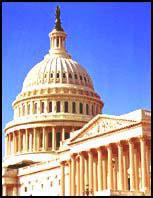Homer Plessey Case

By the end of the 19th century all railway cars in the Southern states were segregated. In 1896 Homer Plessey decided to test the constitutionality of what became known as Jim Crow laws. Plessey, who was seventh-eighths white, sat in white only railroad car in Louisiana. When he told the conductor he was an African American, he was asked to move to a black only railroad car. When he refused he was arrested and was later found guilty of breaking Louisiana's segregation laws.
Plessey appealed to the the Supreme Court but William Billings Brown was rightly convicted in Louisiana for riding in a white only railway car. In doing so he established the legality of segregation as long as facilities were kept "separate but equal" and helped to sustain Jim Crow laws. Only one of the justices, John Harlan, disagreed with this decision.
Primary Sources
(1) William Billings Brown, explaining why he believed Homer Plessey had been rightly convicted by a Louisiana court for riding in a white only railway car.
Laws permitting, and even requiring, their separation in places where they are liable to be brought into contact do not necessarily imply the inferiority of either race to the other, and have been generally, if not universally, recognized as within the competency of the state legislatures in the exercise of their police power. The most common instance of this is connected with the establishment of separate schools for white and coloured children, which has been held to be a valid exercise of the legislative power even by courts of states where the political rights of the coloured race have been longest and most earnestly enforced.
The case reduces itself to the question whether the statute of Louisiana is a reasonable regulation, and with respect to this there must necessarily be a large discretion on the part of the legislature. In determining the question of reasonableness, it is at liberty to act with reference to the established usages, customs, and traditions of the people, and with a view to the promotion of their comfort, and the preservation of the public peace and good order. Gauged by this standard, we cannot say that the law which authorizes or even requires the separation of the two races in public conveyances is unreasonable or more obnoxious to the Fourteenth Amendment than the acts of Congress requiring separate schools for coloured children in the District of Columbia.
We consider the underlying fallacy of the plaintiff's argument to consist in the assumption that the enforced separation of the two races stamps the coloured race with a badge of inferiority. If this be so, it is not by reason of anything found in the act, but solely because the coloured race chooses to put that construction upon it.
(2) John Harlan, dissenting opinion on the case of Homer Plessey (1896)
The white race deems itself to be the dominant race in this country. And so it is, in prestige, in achievements, in education, in wealth, and in power. But in view of the Constitution, in the eye of the law, there is in this country no superior, dominant, ruling class of citizens. There is no caste here. Our Constitution is colour-blind and neither knows nor tolerates classes among citizens.
In respect of civil rights, all citizens are equal before the law. The humblest is the peer of the most powerful. The law regards man as man and takes no account of his surroundings or of his colour when his civil rights as guaranteed by the supreme law of the land are involved. It is therefore to be regretted that this high tribunal, the final expositor of the fundamental law of the land, has reached the conclusion that it is competent for a state to regulate the enjoyment by citizens of their civil rights solely upon the basis of race.
Sixty millions of whites are in no danger from the presence here of 8 million blacks. The destinies of the two races in this country are indissolubly linked together, and the interests of both require that the common government of all shall not permit the seeds of race hate to be planted under the sanction of law. What can more certainly arouse race hate, what will more certainly create and perpetuate a feeling of distrust between these races than state enactments, which, in fact, proceed on the ground that coloured citizens are so inferior and degraded that they cannot be allowed to sit in public coaches occupied by white citizens?
